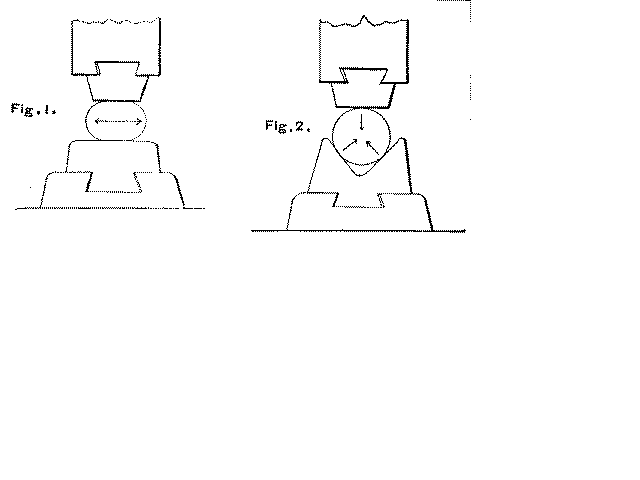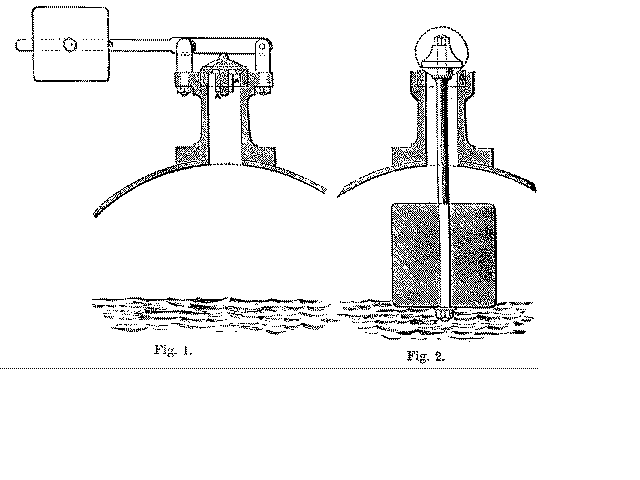Introduction of the V Anvil.
In connection with my Steam Hammer, when employed in forging great cylindrical shafts, I introduced what I termed my V anvil. Its employment has most importantly contributed to secure perfect soundness in such class of forgings.
In the old system of forging cylindrical shafts, the bar was placed upon a flat-faced anvil. The effect of each blow of the hammer upon the work was to knock the shaft into an oval form (see Fig. 1); and the inevitable result of a succession of such blows was destruction of the soundness of the centre or axis of the shaft.

- In order to remedy this grave defect, arising from the employment of a flat-faced anvil, I introduced my V anvil face (see Fig. 2), the effect of which was, that the dispersive action of the blow of the hammer was changed into a converging action, which ensured the perfect soundness of the work; while the V or fork-like form of the angle face kept the work steadily under the centre of the hammer, allowing the scale or scoriae to fall into the apex or bottom of the V, which thus passed away, leaving the faces of the angle quite clear.
This simple and common-sense improvement was eagerly and generally adopted, and has been productive of most satisfactory and important results.
A Spherical-seated Direct-weighted Safety Valve.
Having been on several occasions called to investigate the causes of steam boiler explosions, my attention was naturally directed to the condition of the Safety Valve. I found the construction of them in many cases to be defective in principle as well as in mechanical details; resulting chiefly from the employment of a conical form in the valve, which necessitated the use of a guide spindle to enable it to keep in correct relative position to its corresponding conical seat, as seen at A in Fig. 1. As this guide spindle is always liable to be clogged with the muddy deposit from the boiling water, which yields a very adhesive encrustation, the result is a very riskful tendency to impede the free action of the Safety Valve, and thereby prevent its serving its purpose.

- With a view to remove all such causes of uncertainty in the action of this vitally important part of a steam boiler I designed a Safety Valve, having a spherical valve and corresponding seat, as seen in B C, Fig. 2. This form of Safety Valve had the important property of fitting to its bearing-seat in all positions, requiring no other guide than its own spherical seat to effect that essential purpose. And as the weight required to keep the valve closed until the exact desired maximum pressure of steam has been attained, is directly attached to the under side of the valve by the rod, the weight, by being inside the boiler, is placed out of reach from any attempt to tamper with it.
The entire arrangement of this Safety Valve is quite simple. It is free from all Lever Joints and other parts which might become clogged; and as there is always a slight pendulous motion in the weight by the action of the water in the boiler, the spherical surfaces of the valve and its seat are thus ever kept in perfect order. As soon as the desired pressure of steam has been reached, and the gravity of the weight overcome, the valve rises from its seat, and gives perfectly free egress to any farther accumulation of steam. It is really quite a treat, in its way, to observe this truly simple and effective Safety Valve in action. After I had contrived and introduced this Safety Valve, its valuable properties were speedily acknowledged, and. its employment has now become very general.
| Previous chapter/page | Back | Home | Email this | Search | Discuss | Bookmark | Next chapter/page |